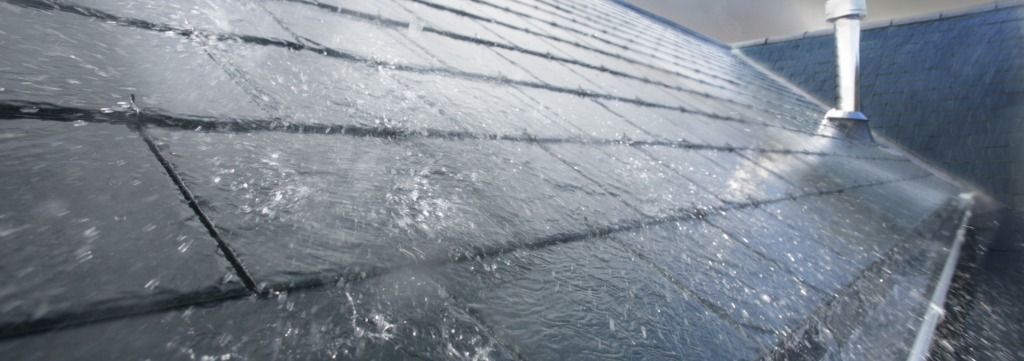How Pacific Northwest Weather Impacts Your Roof
The Pacific Northwest weather can significantly impact your roof. But just how much will depend on where you live, and the quality of the products originally installed. The mountains in the west create a rain trap, bringing in significant rainfall every year. To their east you find dry, semi-arid conditions. Add in moist, humid weather that causes moss build up and raging, windy blizzards that can pull shingles from their decking and you can see how the weather conditions might wreak havoc on your roofing system.
What Weather Can Do to Old Roofs
In the summer, warm days followed by a quick cool down at night can result in roof expansion and contraction. This can weaken the roof structure and can cause roof shingles to warp or split. Ultraviolet light, even on a cloudy day, can cause some roofing materials to decay more quickly. Shingles can buckle, peel and split when their protective oils dry out. Rainy, damp weather year-round can cause water to accumulate under shingles and into your home. High winds can loosen shingles and topple trees. And winter months can bring snow, freezing rain, and ice storms causing ice dams that can damage your roof and your home’s interior. Even small chunks of ice can weaken shingles and cause them to blow off your roof. All types of weather can have a negative effect on asphalt roofs causing them to deteriorate and leak over time.
How to Protect Your Roof from Pacific Northwest Weather Conditions
Whether your roof is new or old, there are some steps you can take to protect it from bad weather:
Inspect Your Roof: At least once a year, have a professional roofer inspect your roof to look for shingles or flashing that may need to be replaced because they are broken or coming loose. An inspector can spot potential leaks and repair existing problems that hot, cold, or rainy weather might make worse. A roof inspection will be especially important after a storm.
Ventilate Your Attic: Proper attic ventilation helps regulate temperature and moisture levels and prevents the buildup of excessive heat and humidity, which can lead to mold, mildew, and structural damage. It allows hot air and moisture to escape, reducing the risk of roof rot, ice dams, and premature deterioration. A roof inspection should affirm that your attic is properly ventilated. If it’s not, you may need to install roof, soffit, and gable vents, along with attic fans.
Trim Overhanging Tree Branches: High winds as well as ice storms can result in falling tree branches that dislodge shingles in an asphalt roof or cause dents in a metal one. It’s a good idea to hire a tree specialist to trim branches that overhang your roof.
Clean Your Gutters: If water can’t flow off your roof easily and down into the gutters, it will back up and cause leaks in your roof. Have your gutters cleaned in the spring and the fall, especially if you are near trees that shed their leaves.
Don’t Ignore Damage and Leaks: If you or an inspector notice roof damage or water leaks, don’t wait to have your roof repaired or replaced. A small roof leak can cause further damage to your roof, walls, floors, furnishings, and the entire structure of your home.
Has bad weather wrecked your roof? The NOW Remodeling professionals are ShingleMasters for CertainTeed and Preferred Installers of Owens Corning roofing systems which means we meet their high standards for installer training, insurance, and licensing. Find out if you need a new roof. Request your free quote today.

